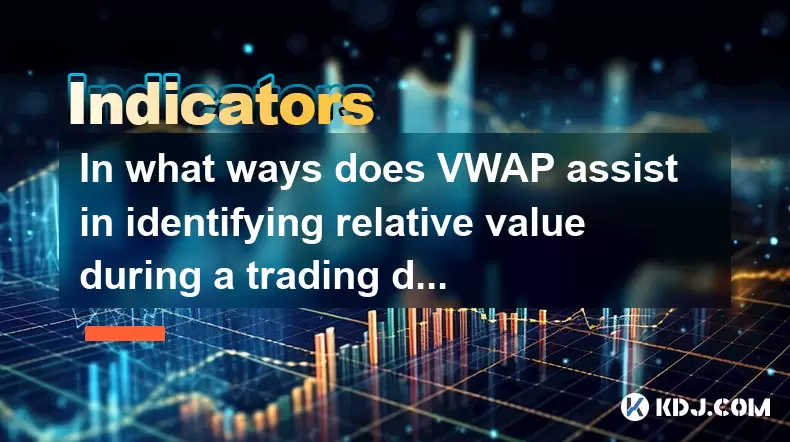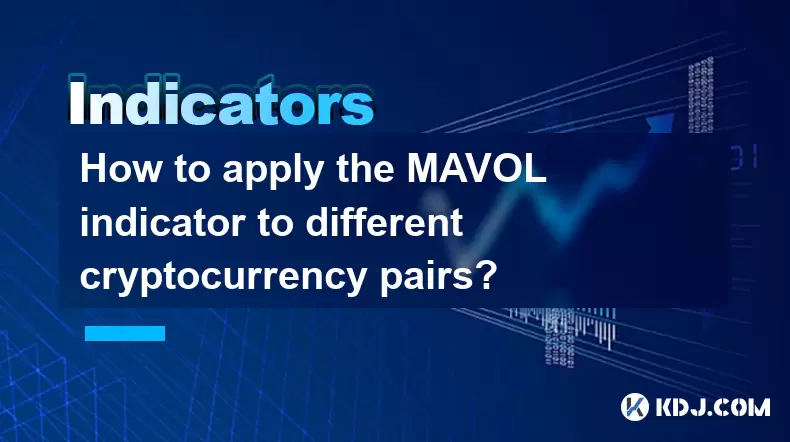-
 Bitcoin
Bitcoin $118400
0.47% -
 Ethereum
Ethereum $3836
2.20% -
 XRP
XRP $3.157
2.98% -
 Tether USDt
Tether USDt $0.9999
-0.03% -
 BNB
BNB $801.5
1.31% -
 Solana
Solana $180.9
2.07% -
 USDC
USDC $0.9999
-0.02% -
 Dogecoin
Dogecoin $0.2225
2.50% -
 TRON
TRON $0.3285
-1.02% -
 Cardano
Cardano $0.7789
2.60% -
 Hyperliquid
Hyperliquid $43.60
2.39% -
 Sui
Sui $3.892
4.41% -
 Stellar
Stellar $0.4229
3.34% -
 Chainlink
Chainlink $18.01
3.98% -
 Hedera
Hedera $0.2745
6.77% -
 Bitcoin Cash
Bitcoin Cash $582.3
3.38% -
 Avalanche
Avalanche $23.77
1.04% -
 Ethena USDe
Ethena USDe $1.001
0.01% -
 Toncoin
Toncoin $3.493
3.59% -
 Litecoin
Litecoin $110.0
2.48% -
 UNUS SED LEO
UNUS SED LEO $8.936
-0.37% -
 Shiba Inu
Shiba Inu $0.00001304
2.49% -
 Uniswap
Uniswap $9.999
1.09% -
 Polkadot
Polkadot $3.897
3.26% -
 Monero
Monero $308.6
-0.83% -
 Dai
Dai $0.9999
-0.01% -
 Bitget Token
Bitget Token $4.504
-0.04% -
 Pepe
Pepe $0.00001154
2.95% -
 Cronos
Cronos $0.1471
3.06% -
 Ethena
Ethena $0.6691
19.53%
In what ways does VWAP assist in identifying relative value during a trading day?
VWAP combines price and volume to reveal true market sentiment, helping traders identify fair value, spot institutional activity, and time entries with precision.
Jul 31, 2025 at 09:32 am

Understanding VWAP and Its Core Functionality
The Volume Weighted Average Price (VWAP) is a pivotal metric in intraday trading, widely used by institutional and retail traders alike to assess the average price a cryptocurrency has traded at throughout the day, based on both volume and price. Unlike a simple moving average, VWAP incorporates transaction volume, making it a more accurate reflection of market sentiment and liquidity. This integration allows traders to determine whether a cryptocurrency is being bought or sold at favorable prices relative to its true market value during the session. Because VWAP is recalculated continuously throughout the trading day, it dynamically adjusts to new trades, offering a real-time benchmark.
The formula for VWAP is:
VWAP = (Cumulative (Price × Volume)) / Cumulative Volume
Each price point is weighted by the volume traded at that level, meaning high-volume trades exert greater influence on the VWAP line. This makes it particularly effective in identifying areas of significant market participation. When the current market price is above VWAP, it suggests that buyers are in control and the asset is trading at a premium. Conversely, when the price is below VWAP, sellers dominate, indicating relative weakness.
Using VWAP to Identify Overbought and Oversold Conditions
One of the primary ways VWAP assists in identifying relative value is by signaling potential overbought or oversold conditions within a trading session. When the price of a cryptocurrency trades significantly above the VWAP, it may indicate that demand is outpacing supply, potentially leading to overvaluation in the short term. Traders interpret this as a signal that the asset could be due for a pullback toward the mean, especially if volume begins to wane.
Conversely, when the price falls well below VWAP, it suggests that selling pressure has overwhelmed buying interest, possibly undervaluing the asset temporarily. In such cases, contrarian traders may view this divergence as an opportunity to enter long positions, anticipating a reversion to the VWAP. The key is to observe not just price deviation but also volume confirmation—a sharp drop below VWAP on high volume is a stronger signal than a minor dip on low volume.
- Monitor the distance between current price and VWAP
- Assess accompanying trading volume for confirmation
- Look for candlestick patterns near VWAP for reversal signals
- Combine with standard deviation bands (VWAP Bands) to quantify extremes
Spotting Institutional Activity Through VWAP
Institutional traders often use VWAP as a benchmark to execute large orders without significantly impacting the market. By aiming to buy below VWAP and sell above it, they seek to achieve favorable average execution prices. Observing how price interacts with VWAP can therefore reveal potential institutional footprints. For example, if a cryptocurrency repeatedly finds support at or near VWAP during pullbacks, it may indicate that large players are accumulating positions at that level.
When price approaches VWAP from above and bounces upward, it can signal strong demand at that average price point. Similarly, rejection from below VWAP with increasing volume may suggest distribution by large holders. Retail traders can use these patterns to align their entries and exits with high-volume consensus pricing. Deviations from VWAP without strong volume may reflect noise rather than meaningful institutional activity.
- Identify repeated bounces or rejections at VWAP
- Analyze volume spikes coinciding with VWAP interactions
- Compare VWAP slope with price trend for alignment
- Use time-of-day context—early session VWAP is less reliable than mid-to-late session
Leveraging VWAP for Trade Execution and Entry Timing
Traders use VWAP not only for analysis but also as a dynamic tool for execution strategy. A common approach is to enter long positions when the price pulls back to VWAP with bullish confirmation, such as a hammer candle or bullish engulfing pattern, especially if volume decreases during the dip and surges on the reversal. This indicates temporary selling pressure being absorbed by buyers.
For short-term traders, crossing above VWAP on strong volume can signal the start of a bullish intraday trend, warranting long entries. Conversely, failure to sustain prices above VWAP—such as a false breakout followed by a swift rejection—can be a short opportunity. The VWAP line thus acts as both a support and resistance level depending on market context.
- Wait for price to approach VWAP with reduced momentum
- Confirm reversal with candlestick patterns and volume
- Enter long if price holds above VWAP after testing it
- Enter short if price fails to break and closes below VWAP
It is essential to adjust position size based on the strength of the signal and proximity to other technical levels, such as Fibonacci retracements or prior day’s close.
Combining VWAP with Other Indicators for Enhanced Accuracy
While VWAP is powerful on its own, combining it with complementary tools increases its effectiveness in identifying relative value. One popular method is overlaying VWAP with moving averages, such as the 20-period EMA, to confirm trend direction. If both VWAP and EMA slope upward and price remains above both, the bullish bias is reinforced.
Another effective pairing is using VWAP with the MACD or RSI. For instance, if price is above VWAP but the RSI shows overbought conditions, the relative value may be diminishing despite bullish momentum. Similarly, a bearish MACD crossover while price trades below VWAP strengthens the case for continued downside.
- Apply VWAP with RSI to detect divergence
- Use MACD to confirm momentum direction relative to VWAP
- Overlay Bollinger Bands to assess volatility around VWAP
- Combine with order flow tools like footprint charts for deeper insight
These combinations help filter false signals and provide a multidimensional view of whether an asset is trading at a fair value during the session.
Frequently Asked Questions
Is VWAP more effective in high-volume or low-volume cryptocurrencies?
VWAP performs best in high-volume cryptocurrencies such as Bitcoin or Ethereum, where transaction data is dense and representative of true market activity. In low-volume altcoins, sparse trades can distort the VWAP calculation, making it less reliable as a benchmark.
Can VWAP be used on timeframes other than 1-minute or 5-minute charts?
Yes, VWAP is typically calculated on intraday timeframes, but it is most meaningful on 1-minute to 15-minute charts. Using it on higher timeframes like daily charts defeats its purpose, as VWAP resets at the start of each trading session. Some platforms allow custom session definitions for extended periods.
How does VWAP reset, and when does it restart?
VWAP resets at the beginning of each trading session. For most platforms, this occurs at 00:00 UTC, though some brokers allow users to define custom start times. Once reset, the calculation begins anew, incorporating only trades from that session.
What is the difference between VWAP and a simple volume-weighted average?
While both involve volume and price, VWAP is cumulative and time-specific, recalculated with each new trade during the session. A simple volume-weighted average might cover a fixed window (e.g., last 100 trades) and doesn’t reset daily, making it less suited for intraday relative value analysis.
Disclaimer:info@kdj.com
The information provided is not trading advice. kdj.com does not assume any responsibility for any investments made based on the information provided in this article. Cryptocurrencies are highly volatile and it is highly recommended that you invest with caution after thorough research!
If you believe that the content used on this website infringes your copyright, please contact us immediately (info@kdj.com) and we will delete it promptly.
- SEC, Crypto, and On-Chain: Navigating the Regulatory Maze
- 2025-08-01 02:31:40
- Bitcoin Bullish Market: How Long Positions are Boosting the Crypto King
- 2025-08-01 02:35:33
- Visa, Stellar, and Stablecoins: A New York Minute on the Future of Finance
- 2025-08-01 01:50:50
- BCH, FET, BlockDAG: Decoding the Crypto Buzz
- 2025-08-01 01:16:37
- Conflux Token, Crypto Simplicity, and WeWake Finance: A New Era?
- 2025-08-01 01:50:50
- Dogecoin, Remittix, and Analyst Targets: Navigating the Crypto Landscape
- 2025-08-01 01:55:40
Related knowledge

What does it signify when the MACD crosses below the zero line?
Aug 01,2025 at 01:43am
Understanding the MACD IndicatorThe Moving Average Convergence Divergence (MACD) is one of the most widely used technical analysis tools in the crypto...

How does the MACD histogram show momentum?
Aug 01,2025 at 01:16am
Understanding the MACD Histogram and Its Role in Cryptocurrency TradingThe MACD histogram is a visual representation of the difference between the MAC...

What is a MACD crossover?
Jul 31,2025 at 11:52pm
Understanding the Role of Private Keys in Cryptocurrency SecurityIn the world of cryptocurrency, private keys are the cornerstone of ownership and con...

How can you use the MACD histogram to determine trend strength?
Jul 31,2025 at 11:10pm
Understanding the MACD Histogram and Its ComponentsThe MACD (Moving Average Convergence Divergence) histogram is a visual representation of the differ...

What is the impact of different moving average types (SMA vs. EMA) on the MAVOL indicator?
Aug 01,2025 at 02:31am
Understanding the MAVOL Indicator in Cryptocurrency AnalysisThe MAVOL (Moving Average Volume) indicator is a technical analysis tool used in the crypt...

How to apply the MAVOL indicator to different cryptocurrency pairs?
Aug 01,2025 at 12:43am
Understanding the MAVOL Indicator in Cryptocurrency TradingThe MAVOL indicator, short for Moving Average Volume, is a technical analysis tool that app...

What does it signify when the MACD crosses below the zero line?
Aug 01,2025 at 01:43am
Understanding the MACD IndicatorThe Moving Average Convergence Divergence (MACD) is one of the most widely used technical analysis tools in the crypto...

How does the MACD histogram show momentum?
Aug 01,2025 at 01:16am
Understanding the MACD Histogram and Its Role in Cryptocurrency TradingThe MACD histogram is a visual representation of the difference between the MAC...

What is a MACD crossover?
Jul 31,2025 at 11:52pm
Understanding the Role of Private Keys in Cryptocurrency SecurityIn the world of cryptocurrency, private keys are the cornerstone of ownership and con...

How can you use the MACD histogram to determine trend strength?
Jul 31,2025 at 11:10pm
Understanding the MACD Histogram and Its ComponentsThe MACD (Moving Average Convergence Divergence) histogram is a visual representation of the differ...

What is the impact of different moving average types (SMA vs. EMA) on the MAVOL indicator?
Aug 01,2025 at 02:31am
Understanding the MAVOL Indicator in Cryptocurrency AnalysisThe MAVOL (Moving Average Volume) indicator is a technical analysis tool used in the crypt...

How to apply the MAVOL indicator to different cryptocurrency pairs?
Aug 01,2025 at 12:43am
Understanding the MAVOL Indicator in Cryptocurrency TradingThe MAVOL indicator, short for Moving Average Volume, is a technical analysis tool that app...
See all articles

























































































